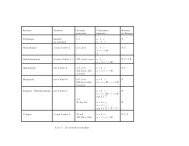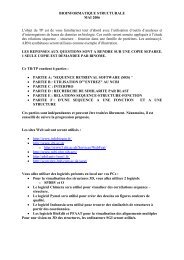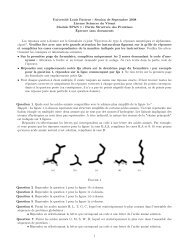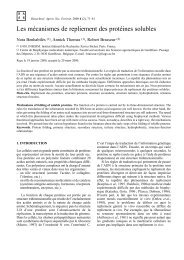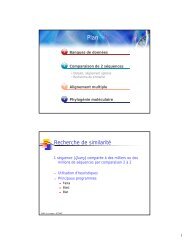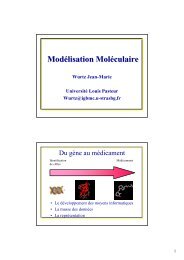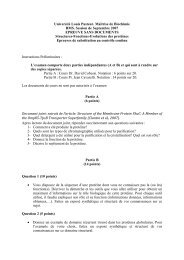Algorithme et Structures de Données
Algorithme et Structures de Données
Algorithme et Structures de Données
You also want an ePaper? Increase the reach of your titles
YUMPU automatically turns print PDFs into web optimized ePapers that Google loves.
Approximation<br />
<strong>de</strong> la fonction<br />
• g(N) proportionnelle à f(N)<br />
• g(N) croit comme f(N) à<br />
une constante "c" près<br />
• Estimation pour N grand<br />
g(N)<br />
g(N) ≤ c * f(N) pour N > N o<br />
N o<br />
f(N)<br />
c*f(N)<br />
Copyright " 'Algorithms in Java'; Robert Sedgewick & Michael Shildlowsky; Third edition, Parts 1-4; Addison-Wesley "<br />
Reproduction ULP Strasbourg. Autorisation CFC - Paris<br />
Propriétés <strong>de</strong> la notation O (1)<br />
• Les constantes peuvent être ignorées :<br />
∀ k > 0, k*f est O( f)<br />
• Les puissances supérieures croissent plus rapi<strong>de</strong>ment :<br />
si f est un polynôme <strong>de</strong> <strong>de</strong>gré d alors f est O(n d )<br />
• Les termes croissants rapi<strong>de</strong>ment dominent la somme<br />
si f est O(g), alors f + g est O(g)<br />
ex: an 4 + bn 3 est O(n 4 )<br />
• Une croissance polynomiale est dictée par la puissance la<br />
plus élevée<br />
n r est O( n s ) si 0 ≤ r ≤ s<br />
g(N)



